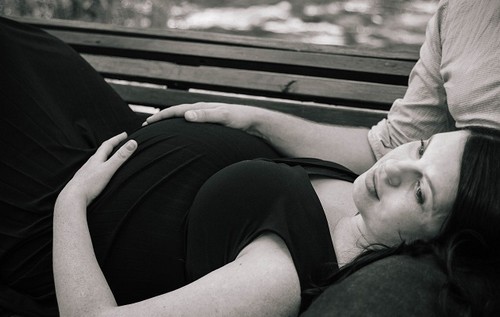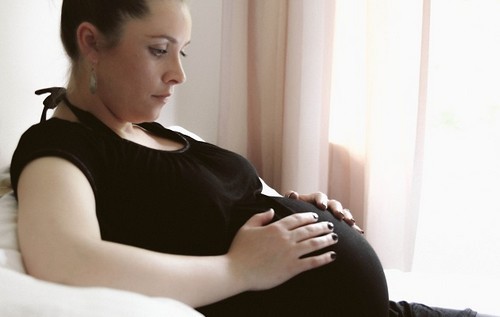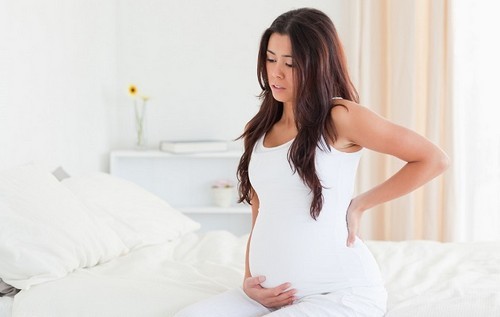At the end of the ninth month of pregnancy, when a woman is about to give birth, her body signals an imminent meeting with the baby with special signs. Of course, all expectant mothers have this in their own way.
But there are also common harbingers by which you can unmistakably learn about the imminent birth. Usually they appear at the 37-38th week of pregnancy, although some women have their occurrence a couple of days before giving birth. And the forerunners of the second birth can begin later, at the 39-40th week or even immediately before the birth of the baby.
In any case, it is important for every woman to know and be able to determine these signs, especially if the birth is first.
Belly down
The abdominal prolapse is due to changes in the anatomy of a woman at the end of pregnancy. That is, the bottom of the uterus descends, drawn by the head of a child ready to go out. If the baby is located upside down, it rests in the small pelvis, pulling the uterus down.
At the same time, its upper part also falls, due to which the pressure on the stomach and lungs decreases. Therefore, this harbinger of childbirth does not go unnoticed – it becomes easier for the expectant mother to breathe.
With the lowering of the uterus, the pressure in the area of the bladder also increases, which contributes to the frequent urge to urinate. But the omission of the abdomen does not mean the immediate proximity of childbirth. It can fall both a week and a month before childbirth, although most often this happens at the 39-40th week. At the same time, the navel protrudes and the skin stretches. You can determine the abdominal prolapse by the level of the navel,
Gait
Changes in posture when a woman in the 39-40th week of pregnancy acquires a characteristic “duck” gait and a special proud look due to the head slightly thrown back. This precursor to childbirth becomes noticeable due to a shift in the center of gravity that occurs after the prolapse of the uterus.

Unpleasant sensations in the lower back
Another type of harbingers of childbirth can be painful or unpleasant sensations in the lower back and lower abdomen. Of course, the back can be disturbing in the first weeks of pregnancy, but at the 37-38th week there is a special discomfort.
This is whined and pulled by ligaments stretching from bursting, which is associated with the test pressure from the fetus. Tingling in the pubic area is also possible. Although these precursors of labor in multiparous may not be noted.
Increased urination with relaxation of stool
These forerunners of early births are due to compression of the pelvic organs of the amniotic fluid at 38-39 weeks. And stool thinning is caused by a high concentration of estrogen in the body of a pregnant woman, who, with the approach of childbirth, reaches peak levels. This symptom more accurately indicates a fast birth than others lasting weeks.
Weight loss and appetite
Throughout pregnancy, women are usually regularly weighed. Just 39-40th week you can detect a sharp weight loss of about 1.5 kg. This is due to the fact that before childbirth there is a decrease in tissue edema, which can be seen on the legs. If before the gum from the socks left a rather deep mark on them, then by the 37-38th week it was not so noticeable. Sometimes precursors of labor are noted, such as increased excretion of fluid from the body and a decrease in appetite.
This is partly due to the general change in mood of the pregnant woman, who is looking forward to resolution from the burden and experiencing a peak of discomfort. The 37-40th week of pregnancy is characterized by difficult sleep, shortness of breath and heartburn. And immediately before birth, as a reaction to the release of hormones that regulate labor, emptying of the stomach occurs.

Changes in the condition of the cervix
These anatomical precursors are visible to the doctor rather than the woman herself. Vaginal examination shows a significant expansion of the cervix from the side on which the fetus adjoins it. The resulting hole is the size of a finger. The fetal membrane at the 38-39th week of gestation is as close to it as possible and easily accessible for infections.
During this period, bathing is not recommended; it is better to replace them with a shower and regular genital hygiene. As labor approaches, uterine arousal also increases. Already from the 37-38th week, periodic contractions of the uterus are noted, occurring several times a day and lasting from a couple of minutes to several hours immediately before birth.
Genital secretions
A slight increase in discharge from the genital tract from the 37-38th week indicates the detachment of the fetal bladder from the uterine wall or the possible leakage of amniotic fluid. Brownish mucous discharge, similar to menstrual flow, usually occurs on the last day before delivery. And bloody, accompanied by active contractions of the uterus, indicate that childbirth has already begun. Although the discharge is individual and different in multiparous and giving birth for the first time, they are an undoubted sign of an early meeting with the baby.
Cork
The mucous plug is a collection of colorless or with small blood streaks of mucus with a volume of 2-3 ml. It has a denser consistency than ordinary vaginal discharge, but still not a cork in the truest sense of the word. The exit of this clot, which closed the entrance to the uterus, as well as the ajar of its neck, are the forerunners of childbirth, which can last for several days and even during the 39-40th week.
False contractions
Also, signs of imminent delivery include the appearance with subsequent intensification of false or “training” contractions. These precursors differ from true fights in their irregularity and varying durations. They are usually painless, but capable of delivering unpleasant sensations. Moreover, false contractions for periods of 37-40 weeks cause more concern in second-born women who are already familiar with all the processes. And if the birth is first, then the woman may not even notice them. The transition to regular painful contractions means the beginning of childbirth.

Signs of close birth in primiparous
A feature of the first birth is that the forerunners of childbirth described in primiparous are perceived in the absence of appropriate experience as ailment. In addition, they proceed more smoothly. And you can focus on them in time only very approximately. After all, they can manifest themselves both at the 38-39th week of the gestation period, and a few days before the birth. Due to the subjectivity of perception and a smooth nature, the precursors of birth in primiparous often go completely unnoticed. In this case, from the above list about the first birth can only warn 2-3 signs. But, nevertheless, everyone needs to know them, if only in order not to be afraid of false fights, taking them for real.
Signs of early birth in multiparous
Women who gave birth from those who did not give birth differ anatomically, having a wider entrance of the cervix. Their body, having the experience of childbirth, reacts faster and more actively to hormonal changes during pregnancy. This is due to the fact that the precursors of childbirth in multiparous appear at different times and are pronounced. For example, liquid discharge and mucous plug during repeated birth have a larger volume, and the discharge also increases as it approaches the end of gestation.
False contractions in multiparous women occur earlier and are more worrying, which, however, is caused by extensive experience in identifying them. They also have a later abdominal prolapse, not a couple of weeks before giving birth, but immediately in front of them. This also applies to some other signs, having discovered which, a woman who is having a second birth,
The processes of pregnancy and childbirth are purely individual. But the precursors common to most expectant mothers, if correctly recognized, will help to prepare in time for the long-awaited meeting with the baby. If you carefully listen to the signals sent by the body, and correctly classify the changes occurring at the 37-40th week of pregnancy, the birth will be easier for both the mother and the baby.



